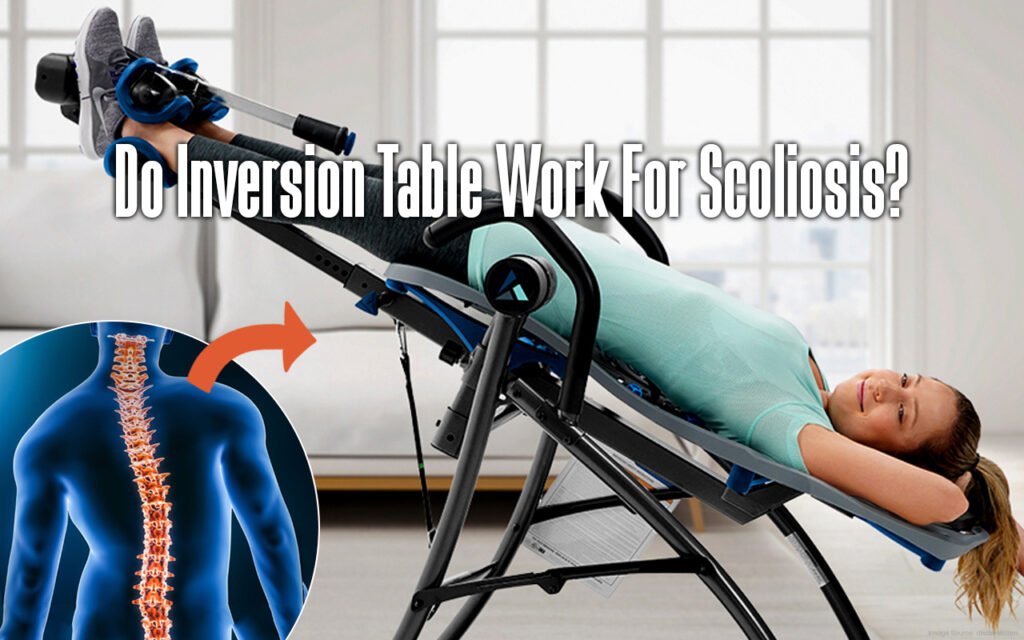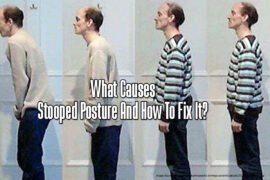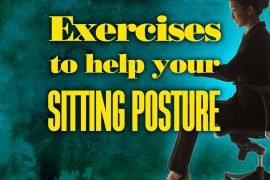Scoliosis is the spine’s abnormal curvature, leading to pain, discomfort, and restricted movement. Scoliosis patients often explore alternative therapies to manage symptoms in addition to conventional treatment options like physical therapy or surgery. Inversion therapy, specifically the use of inversion tables, has gained attention as a non-invasive approach to address scoliosis-related issues in recent years. This article examines the effectiveness of inversion tables for scoliosis, discussing the benefits, risks, and considerations of this treatment approach. In this article, we examine the effectiveness of inversion table for scoliosis and discuss this treatment’s benefits, risks, and considerations.
Understanding Scoliosis
Table of Contents
It is important to clearly understand the condition before discussing the benefits of inversion tables for scoliosis treatment. Scoliosis varies in severity from mild to severe. Scoliosis, often referred to as idiopathic scoliosis, is a condition that can develop during adolescence or be present from birth. While the exact cause remains unknown in most cases, it is characterized by an abnormal spine curvature.
Scoliosis can result in a variety of symptoms, including:
- Back Pain: Individuals with scoliosis often experience chronic or occasional back pain, which can worsen due to the curvature of the spine.
- Postural Changes: Spinal curvature can result in noticeable postural alterations, including uneven shoulders, hips, and a rotated torso.
- Reduced Mobility: Severe scoliosis can greatly impact a person’s mobility and flexibility, which affects their everyday activities.
- Breathing Difficulties: Scoliosis can cause breathing difficulties, especially when the curvature affects the chest area.
- Psychosocial Impact: The condition can affect self-esteem and body image, especially during adolescence.
Scoliosis presents a wide range of symptoms and potential complications, driving individuals to seek treatment options to manage their condition and relieve discomfort.
Inversion Therapy: An In-Depth Exploration
Inversion therapy, a holistic approach to spinal health, has become increasingly popular in recent years. Controlled, inverted body positioning is used to harness the therapeutic benefits of gravity’s effects. It’s now gaining renewed interest in modern healthcare for its potential to relieve back pain and enhance well-being, and it has been used for centuries in different cultures. Let’s delve into the intricacies of inversion therapy:
1. Mechanism of Action:
Inversion therapy aims to counteract the gravitational pressure on the spine by reversing its compressive effects. When the body is inverted, gravitational forces work in the opposite direction, which can potentially offer the following benefits.
a. Spinal Decompression: Inversion tables stretch and create traction on the spine, increasing the intervertebral space. This helps relieve pressure on the spinal discs, nerves, and facet joints. It can offer relief for conditions like spinal stenosis and herniated discs.
b. Improved Blood Circulation: Inverted positions promote improved blood circulation in the spine and surrounding muscles. Improved circulation promotes healing by aiding in nutrient delivery and waste removal.
c. Muscle Relaxation: Inversion therapy is a technique that can effectively relax and lengthen tight muscles in the back, neck, and shoulders. Muscle relaxation can help alleviate pain, reduce spasms, and enhance flexibility.
2. Types of Inversion Equipment:
Inversion therapy involves using different equipment to practice and offers various levels of control and customization:
a. Inversion Tables: Inversion tables are popular and widely utilized equipment for inversion therapy. Individuals can secure themselves in an inverted position with their feet fastened securely. Users have the ability to control the degree of inversion, which can range from horizontal (0 degrees) to full inversion (90 degrees). Inversion tables are a popular choice for beginners in inversion therapy due to their controlled nature.
b. Inversion Chairs: Inversion chairs offer a seated inversion experience, enabling individuals to achieve a partial inversion. It’s convenient and effective for those looking to enjoy the benefits of inversion therapy. These are popular for their comfort and user-friendly design, which makes them ideal for those with mobility constraints.
c. Gravity Boots: Gravity boots are ankle-worn devices that allow users to hang from a horizontal bar or similar structure, which provides a unique way to exercise and decompress the spine. This equipment provides advanced inversion capabilities, requiring increased strength and coordination.
3. Conditions Treated with Inversion Therapy:
Inversion therapy is a popular complementary treatment for a range of back-related conditions, which includes:
a. Back Pain: Chronic or acute back pain, often caused by muscle tension, herniated discs, or spinal misalignment, drives individuals to seek relief through inversion therapy.
b. Sciatica:<span data-preserver-spaces=”true”> Sciatica, a condition marked by leg pain originating from the lower back, can be relieved with inversion therapy, which offers spinal decompression.
c. Herniated Discs: Inversion therapy can help alleviate pain and discomfort by creating space between vertebrae reducing pressure on herniated or bulging discs.
d. Poor Posture: Inversion therapy can help stretch and relax muscles, promoting better alignment for those with poor posture habits.
e. Stress and Relaxation: Inversion therapy offers more than just physical benefits; it promotes relaxation and relieves stress. Inverted positions can help promote mental relaxation and reduce stress levels.
4. Safety Considerations:
Inversion therapy has potential benefits but also carries risks. Safety should be a top priority when considering this treatment:
a. Medical Consultation: Individuals with pre-existing medical conditions like high blood pressure, glaucoma, or heart disease should consult a healthcare provider before starting inversion therapy. Inversion therapy is not suitable for all individuals.
b. Proper Instruction: Proper instruction is crucial for using inversion equipment safely and avoiding injuries. Individuals should receive training on securing themselves, controlling inversion, and safely returning to an upright position.
c. Gradual Progression: Beginners of inversion therapy should start with shallow angles and gradually increase the angle as they become more comfortable with the practice.
d. Monitoring: Individuals should pay attention to their bodies for any signs of discomfort or adverse reactions when using inversion therapy. They should stop using the therapy if they experience pain, dizziness, or discomfort.
e. Quality Equipment: Investing in high-quality inversion equipment is essential for safety and effectiveness. Avoid cheap or poorly constructed devices to minimize potential risks.
5. Integration with Other Therapies:
Inversion therapy is commonly suggested for holistic spinal health and managing pain. It can enhance various treatments like physical therapy, chiropractic care, and exercise programs. By combining different therapies, we can adopt a more holistic approach to tackle underlying issues and attain lasting relief. This tremendous approach ensures that all aspects of the problem are addressed, leading to better outcomes and improved well-being in the long run.
The Debate: Do Inversion Tables Work for Scoliosis?
The efficacy of inversion tables for scoliosis is a multifaceted matter characterized by divergent viewpoints and a dearth of comprehensive scientific evidence. This summary examines both sides of the debate to offer a tremendous understanding of the topic at hand.
Arguments in Favor of Inversion Tables for Scoliosis:
Inversion tables are commonly used to manage scoliosis, a condition marked by an abnormal spinal curvature. Inversion tables can be beneficial to a comprehensive scoliosis management plan, although they are not considered a standalone treatment. Several arguments support their use in managing scoliosis effective plan:
Pain Relief
Scoliosis causes chronic back pain due to the spine’s abnormal curvature. Inversion therapy can relieve pain by decompressing the spine, reducing pressure on spinal discs, and relaxing tense muscles. Significant reduction in discomfort for scoliosis patients can be achieved through this approach.
Improved Spinal Alignment
Inversion tables have the ability to enhance spinal alignment, leading to improved posture and overall spinal health. Inverting the body can gently promote natural spine alignment, providing potential benefits for individuals with scoliosis. Inversion tables can’t cure scoliosis, but they can help improve posture and provide relief for your spine.
Enhanced Circulation
Inverting the body can have a positive impact on blood circulation, leading to improved overall health and well-being. This is beneficial for scoliosis patients as it ensures proper nourishment and hydration of the spinal discs. Proper blood flow supports the healing of damaged tissues in the affected area.
Reduced Muscle Tension
Scoliosis can cause muscle imbalances and tension. Inversion therapy offers relief by relaxing and stretching the muscles, easing muscle spasms and discomfort associated with scoliosis. Improved muscle flexibility can lead to better posture and reduced strain on the spine, promoting overall musculoskeletal health.
Non-Invasive Approach
Inversion therapy is a non-invasive approach that avoids the need for surgery or medication while still providing effective results. This makes it a compelling choice for scoliosis patients seeking conservative, non-pharmaceutical methods to manage their condition.
Complementary to Other Treatments
Inversion tables can complement scoliosis treatments like physical therapy, bracing, and chiropractic care. Inversion therapy, when used alongside a comprehensive treatment plan, can potentially improve the overall effectiveness of scoliosis management.
Improved Quality of Life
Inversion tables can offer much-needed relief from the daily discomfort and pain experienced by certain scoliosis patients. Improving their quality of life can profoundly influence their mental and emotional well-being in a positive manner.
Arguments Against Inversion Tables for Scoliosis
Inversion tables are frequently mentioned as a possible treatment for scoliosis. However, there are several arguments against their effectiveness for this specific condition. Scoliosis is a spinal deformity marked by abnormal lateral curvature of the spine. It is a complex condition that affects the alignment and structure of the back. Although inversion tables may offer benefits to specific individuals and conditions, they may not be the optimal or suitable choice for treating scoliosis. Here are some arguments against using inversion tables for scoliosis:
Lack of Evidence-Based Support
Inversion tables for scoliosis lack substantial scientific evidence to support their effectiveness as a treatment, which is a primary argument against their use. Scoliosis is a medical condition that often involves a multidisciplinary approach, with treatments ranging from physical therapy and bracing to, in certain instances, surgery. Inversion therapy is not a proven standalone treatment for scoliosis, and its effectiveness remains uncertain.
Risk of Complications
Inversion tables involve hanging upside down or at an inverted angle and straining the spine. Individuals with scoliosis already have a compromised spine, and subjecting it to additional stress through inversion therapy may lead to increased pain, discomfort, or even potential complications, such as aggravated spinal deformity.
Individual Variation
Scoliosis is a condition marked by varying degrees of curvature, which can differ significantly from one person to another. Individuals may require different approaches, as what works for one person may not work for another. Inversion tables need more customization to address the unique requirements of scoliosis patients, and their effectiveness may be unpredictable.
Potential for Muscle Imbalances
Scoliosis can cause muscle imbalances and weakness in the spine and trunk. Inversion tables may not effectively target and strengthen the muscles needed to address these issues. Hanging upside down on an inversion table may actually worsen muscle imbalances instead of correcting them.
Better Treatment Options
Established scoliosis treatment options with strong evidence and wide acceptance in the medical community exist. These options include physical therapy, bracing, and, in severe cases, surgical intervention. Tailored treatments for individuals are more effective than a one-size-fits-all approach, like inversion therapy, as they are designed to address specific conditions and needs.
Risk for People with Coexisting Health Issues
Inversion tables may not be suitable for everyone, particularly individuals with specific medical conditions like high blood pressure, glaucoma, or heart problems. If you use an inversion table without proper medical guidance, then it can be risky for individuals with scoliosis and other health concerns.
Considerations for Individuals with Scoliosis
Scoliosis is a condition that varies in severity and details from person to person. Individuals with scoliosis should be aware of important considerations regarding their condition. These considerations encompass various aspects of daily life, including medical management, lifestyle choices, and emotional well-being.
Diagnosis and Monitoring:
- Early diagnosis is vital for effective management. Regular check-ups with a healthcare provider, particularly during periods of growth, are crucial, especially during adolescence.
- X-rays and imaging techniques are utilized to track the curve’s advancement and evaluate the effectiveness of treatment.
1. Treatment Options:
- Scoliosis treatment varies depending on the severity and type of the condition. Options can include bracing, physical therapy, and surgery.
- Consider consulting healthcare professionals for decision-making, considering factors like age, curve progression, and overall health.
2. Lifestyle and Activities:
- Individuals with scoliosis can participate in various activities, although caution should be taken with high-impact sports and heavy lifting.
- Regular workouts and a balanced diet contribute to a healthy lifestyle and support overall health and bone strength.
3. Pain Management:
- Some individuals with scoliosis may experience pain or discomfort, particularly as the curvature worsens. Pain management strategies can involve physical therapy, pain medications, or interventions like spinal injections.
4. Posture and Ergonomics:
- Good posture is crucial in reducing discomfort and preventing the progression of the curve. Ergonomic considerations, like utilizing suitable chairs and workstations, can provide benefits for individuals with scoliosis.
5. Psychosocial Well-being:
- Living with scoliosis can have emotional and psychological impacts. Support from loved ones & mental health professionals is crucial for managing the emotional aspects of this condition.
- Support groups and online communities provide a sense of belonging and shared experiences.
6. Self-Esteem and Body Image:
- Scoliosis can impact body image, especially when there is a noticeable spine deformity. It is crucial to promote a positive self-image and self-esteem to enhance overall well-being.
7. Surgical Considerations:
- Surgery can be recommended in severe cases or when other treatments are ineffective. Consulting with a surgeon is essential for a comprehensive discussion on this decision, ensuring a thorough understanding of potential risks and benefits.
8. Long-Term Management:
- Scoliosis is typically a lifelong condition requiring regular follow-up appointments to monitor its progression and make necessary adjustments to treatment plans. It is important to maintain ongoing monitoring and adapt treatment as needed to ensure the best outcomes.
9. Pregnancy and Family Planning:
- Women diagnosed with scoliosis can experience successful pregnancies; however, it is crucial for them to have an open discussion with a healthcare provider regarding their condition. Assessing the potential impact on pregnancy and childbirth is of utmost importance.
10. Educational and Career Considerations:
- Scoliosis doesn’t usually limit education or career prospects. Ergonomic adjustments in the workspace and clear communication with employers or educators may be necessary.
11. Research and Advocacy:
- Staying informed about advancements in scoliosis treatment and research can be empowering. Some individuals choose to get involved in advocacy efforts to raise awareness and support research.
Conclusion
Inversion tables are gaining attention as a non-invasive treatment for scoliosis. Advocates claim that they can provide pain relief, enhance flexibility, and induce muscle relaxation. However, the effectiveness of inversion tables for scoliosis still needs to be debated due to limited scientific evidence and potential risks from incorrect usage.
Are you in search of the finest inversion table to potentially alleviate scoliosis? Look no further! Check our comprehensive guide on the “8 Best Inversion Table of 2024,” packed with valuable insights and expert recommendations. After thorough research and evaluation, we have curated a list of the best available options. Our goal is to provide valuable insights to empower you to make strong decisions. Find the perfect inversion table for your needs and preferences. Start your journey towards relieving scoliosis discomfort and improving spinal health by clicking here.







